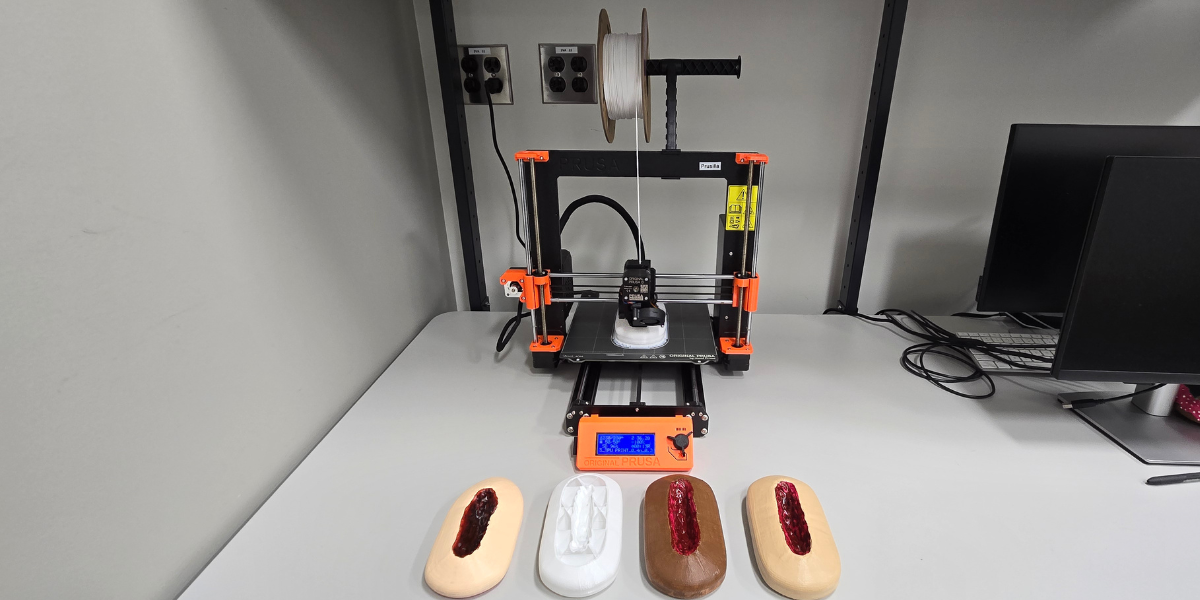News
One way to save money in sim labs: Create your own wounds

In nursing education, simulation equipment can be expensive and create waste that ends up in landfills. The Michigan State University College of Nursing’s Office of Technology and Digital Innovation set out to solve these issues in our simulation labs to create reusable wounds for exercise on manikins.
It started with a $2 million donation from Nancy Grosfeld last year, part of which was used to acquire a 3D printer. The college has been printing one a day, in total there are 50 new wounds in rotation.
“I started to brainstorm all the ways we could use a 3D printer at the college,” said Andy Greger, the college’s director for technology and innovation at the college. “Our role is to support nursing education, so we worked with our college’s simulation team who handed us a wound that can be inserted into a manikin.”
That’s when Sophia Sinclair, the academic technology coordinator for the college, taught herself how to 3D print via YouTube. After some time, she then measured out insert wounds for manikins and graphed out the dimensions to create these inserts.
“I started off with teaching myself how to use the 3D Printer, using YouTube as a reference and creating easy objects like doughnuts,” said Sinclair. “After I gained experience and confidence with the printer, I was able to reverse engineer how companies created these multi-use wound inserts.”
Previously, the college was using plaster and clay to create single-use wounds for simulations. These not only took a lot of time to make but created waste since they were mostly one time use. The college has saved thousands of dollars by printing these wounds on campus.
"Sophia's 3D wounds are a game-changer. They fit perfectly, are durable, waterproof, and incredibly realistic, making them a vast improvement over the previous fragile plaster versions. They've elevated skills training to a whole new level," said Jeremy Boak, the college’s healthcare simulation technician specialist.
Sinclair and Greger plan to expand what the college can 3D Print. Their goal is to expand to a printer that can print silicone to create wounds that can be cut into multiple times with easy repair.
“The first multi-use wound is still being used; the model has changed, though, with the help of our simulation team,” Greger said. “Jeremy and Sophia's work together has not only reduced waste the college creates but has saved the college resources that can be used for other education needs.”
